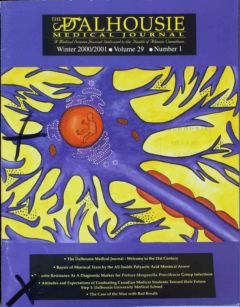Repair of Meniscal Tears by the All-Inside Polylactic Acid Meniscal Arrow
DOI:
https://doi.org/10.15273/dmj.Vol29No1.4311Abstract
The objective of meniscal repair is to prevent the early onset of osteoarthritis and alleviate the symptoms of a torn meniscus. In order to minimize the risk of neurovascular damage when repairing posterior and lateral horn tears of the meniscus, an all-inside arthroscopic surgical technique has been developed using a polylactic acid (PLA) tack as a bioabsorbable "meniscal arrow". This paper is a retrospective study that evaluates the efficacy of this technique. Post-operative evaluation was performed by chart review and surveys with respect to knee function (Lysholm Scale), activity level (Tegner Activity Scale), and patient quality of life (Medical Outcomes Survey, Short Form-36). Clinical evaluation showed that 12 of 13 patients had successful repair by this technuque. Eight patients had normal range-of-motion (ROM), three were restricted, and two were unrecorded. Surveys were completed by 8 of 13 patients. Six of eight survey respondents returned to pre-injury levels of sport activity. Mean scores of the eight survey respondents on the Short Form-36 showed slightly lower than average values for Physical Functioning (PF), Role-Physical (RP), and Bodily Pain (BP); however, General Health (GH), Vitality (VT), Social Functioning (SF), Role-Emotinal (RE), and Mental Health (MH) scores were above average. All study values were within 1.2 SD of the norm. Quality of life did not appear to be affected. Seven of eight survey respondents reported slight impairment while squatting. The all-inside meniscal arrow repair technique was effective and appropriate in repairing meniscal tears of the knee. Unfortunately, difficulty in squatting and restriction of ROM are two sequelae that may occur post-operatively.Downloads
How to Cite
Chew, H. F., & Coady, C. M. (2001). Repair of Meniscal Tears by the All-Inside Polylactic Acid Meniscal Arrow. DALHOUSIE MEDICAL JOURNAL, 29(1). https://doi.org/10.15273/dmj.Vol29No1.4311
Issue
Section
Original Research
License
Authors who publish with this journal agree to the following terms:
- Authors retain copyright and grant the journal right of first publication with the work simultaneously licensed under a Creative Commons Attribution License that allows others to share the work with an acknowledgement of the work's authorship and initial publication in this journal.
- Authors are able to enter into separate, additional contractual arrangements for the non-exclusive distribution of the journal's published version of the work (e.g., post it to an institutional repository or publish it in a book), with an acknowledgement of its initial publication in this journal.
- Authors are permitted and encouraged to post their work online (e.g., in institutional repositories or on their website) prior to and during the submission process, as it can lead to productive exchanges, as well as earlier and greater citation of published work (See The Effect of Open Access).


